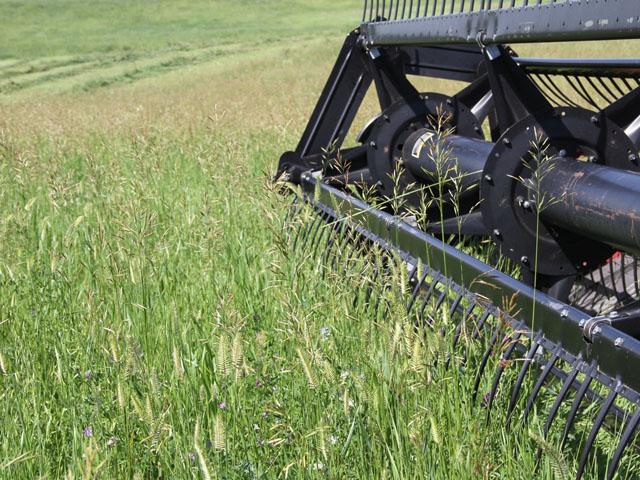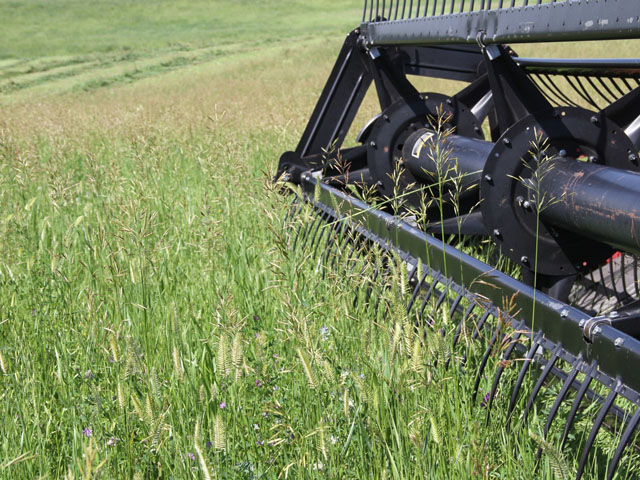Ag Policy Blog
RMA Adjusts Prevented Planting Rules for Haying and Grazing Cover Crops
USDA's Risk Management Agency (RMA) announced on Tuesday that the agency is making permanent a new provision that allows producers to hay, graze or chop cover crops and still receive a full prevented planting payment.
To accommodate the different farming practices across the country, RMA is also increasing flexibility related to the prevented planting "1 in 4" requirement, as well as aligning crop insurance definitions with USDA's National Organic Program.
"We are responsive to the needs of producers, and we are updating several key policies to encourage the use of cover crops and other conservation practices," RMA Administrator Marcia Bunger said. "We want to provide producers tools to help mitigate and adapt to climate change as well as ensure crop insurance works well for a wide variety of producers, including organic producers."
The 2021 crop year was relatively limited for prevented planting as USDA's Farm Service Agency reports about 2.1 million acres were listed as prevented planting. Arkansas, Louisiana, Texas and California reported the highest acres of prevented planting.
Responding to drought in the northern Plains, RMA had announced in July that producers could hay, graze or chop cover crops and still receive 100% of their prevented planting payment. Previously, USDA had restricted haying and grazing until after Nov. 1, or producers would see their prevented planting payment reduced by 65%.
The 1 in 4 rule, put in place in 2020 nationally, required land to be planted, insured and harvested at least once in the last four crop years. Now, USDA is allowing some flexibilities. Those include: Growing of an insured perennial crop, such as alfalfa, red clover or mint, to be considered planted; allow a crop covered by the Noninsured Crop Disaster Program (NAP) to meet the insurability requirement; allow a producer to prove the acreage was planted and harvested in at least two consecutive years out of the four previous years to meet the insurability requirement.
The details are in an RMA news release.
- USDA RMA -- USDA updates crop insurance to respond to producer needs, support conservation and climate mitigation efforts https://www.rma.usda.gov/…
RMA Announces Crop Insurance for Small-Scale, Local Producers
P[L1] D[0x0] M[300x250] OOP[F] ADUNIT[] T[]
RMA on Tuesday also announced a new Micro Farm Policy for small-scale farms that sell locally.
"USDA is focused on supporting local and regional food systems, and Micro Farm is one more example of how we're helping agricultural producers with farms of all shapes and sizes to manage their unique operations and risk," said Marcia Bunger, administrator for USDA's Risk Management Agency (RMA). "The Risk Management Agency values collaboration and feedback from our customers, and Micro Farm is one way we're responding to producers' needs."
Micro Farm is offered through Whole-Farm Revenue Protection (WFRP) and is geared to local producers. Details include:
- Eligibility: Micro Farm is available to producers who have a farm operation that earns an average allowable revenue of $100,000 or less, or for carryover insureds, an average allowable revenue of $125,000 or less. The increase in allowable revenue for a carry-over insured will allow for some farm growth in subsequent years before they become ineligible for the program. RMA's research showed that 85% of producers who sell locally reported they made less than $75,000 in gross sales.
- Coverage levels: All coverage levels will be available to producers using Micro Farm. This will enable producers to purchase the 80% and 85% coverage levels without providing additional paperwork.
- Underwriting and recordkeeping requirements: Micro Farm minimizes underwriting and recordkeeping requirements, and producers will not have to report expenses and individual commodities.
- Post-production revenue: Producers can include post-production activities as revenue, such as washing and packaging commodities or value-added products like jam.
Micro Farm is available for the 2022 crop year. Sales closing dates are January 31, 2022; February 28, 2022; or March 15, 2022, depending on the producer's county.
Producers with crops insured under another crop insurance policy or a vertically integrated operation will not be eligible.
This new policy derived from research directed by the 2018 farm bill, and it includes feedback from producers who grow for their local communities.
DTN Ag Policy Editor Chris Clayton contributed to this report.
Jerry Hagstrom can be reached at jhagstrom@nationaljournal.com
Follow him on Twitter @hagstromreport
(c) Copyright 2021 DTN, LLC. All rights reserved.





Comments
To comment, please Log In or Join our Community .